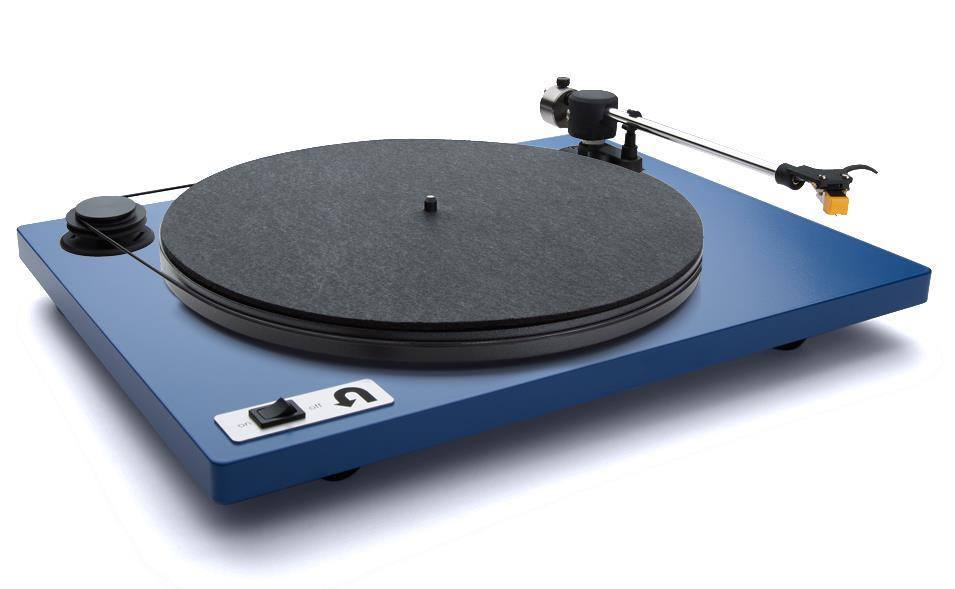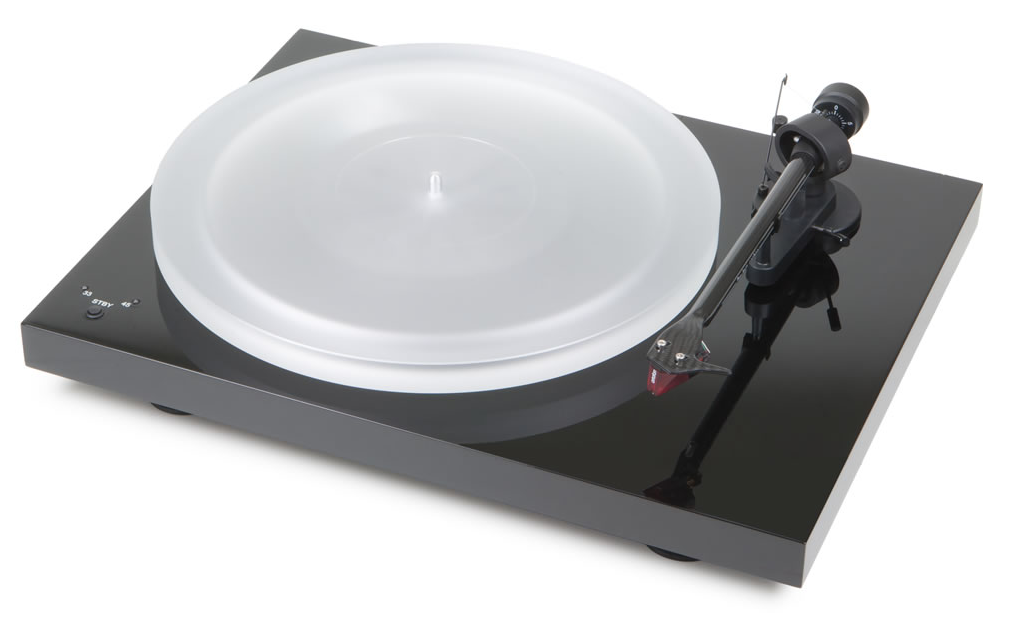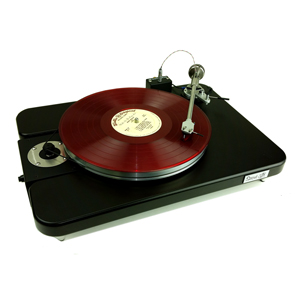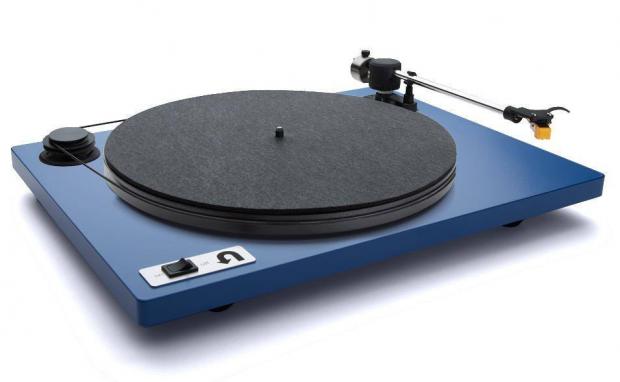Body Buzz: Turntables
|
In last week’s installment of Body Buzz, I tried to convince you to get a turntable and start listening to LPs, either for the first time, or again, as the case may be. I spoke of the irritation-inducing ills inherent to digital audio (largely due to jitter), and argued that listening to an all analog path, from the recording studio to your speakers, was the only way to bypass digital all together and enter the warm and wonderful world of analog sound. This week we consider three different turntable options, from a very-good-but-affordable unit up to a fairly pricey audiophile-grade table. Before we spin that story, let me remind you that in order to have an all-analog listening experience you are going to need the following: (1) an analog-derived LP record (lots out there, and see last week’s BB for how to get them); (2) an analog turntable (not a USB-ported one); and (3) an analog stereo system that includes a phono preamp (either built-in to your receiver/amp or free standing). So, assuming you’re ready to leap into, or back into, vinyl listening, here are three turntables to consider. |
 |
AN EXCELLENT AFFORDABLE TABLE: U-Turn ORBIT BASIC ($179, or $249 with built-in phono preamp) When Orbit released the U-Turn table, they sold out immediately. A smash hit with audiophile writers hoping to turn people on to vinyl with an affordable, stylish, and good-sounding table, the U-Turn seemed to wipe out the competition’s $200-$500 offerings overnight. There sure is a lot to like about the U-Turn, including that they are built by hand in Boston. The table is a relatively basic unit capable of playing 33 and 45rpm discs. It includes an MDF platter (a surprisingly good material for deadening unwanted resonances), a decent cartridge (which contains the needle and the magnetic mechanism that converts the vibrations into electrical current), a dust cover, and felt platter mat—everything you need to spin a record is there, and the table comes “set up.” “Set up” of any turntable is key to deriving the highest performance out of it. A meh turntable that has been properly aligned and weighted can easily outperform a high-end table that’s out of whack. For most folks, a set up isn’t an impossible DIY job, but it’ll depend on how ambitious and mechanically inclined you are (YouTube is your teacher). Needless to say, the Orbit is ready to go out of the box, eliminating one of the greatest challenges to novices trying to get a decent sound from their turntable. The Orbit also includes an external “wall wart” power supply, which on the surface might appear to be a lower quality item, but when it comes to turntables, getting the power-supply out of the table itself is a plus, as it minimizes interference with the rest of the mechanism. The most expensive tables often use external power supplies for this reason, so this is a plus here, especially for $179. I’ve heard the Orbit offer up amazing three-dimensionality while maintaining the soft-but-articulate sound that only analog can deliver. For the price, you’ll have money left over to indulge your newfound LP collecting habit, and—to be frank—I’m not sure spending up to $500 really gets you that much more out of a turntable—and I say this as one who returned a $500 table due to annoying resonances that I’ve never heard from an Orbit Basic. Lots of cool colors to choose from, but I’ll recommend gray and white as capable of hiding dust and fingerprints. |
 |
A BIG LEAP UP: Pro-Ject Debut Carbon Esprit with 2M Blue stylus ($713) Leaping straight past the whole $300-$600 category (where improvements are, in my opinion, not matched by the expense), we find the Pro-Ject Debut Carbon Esprit, a table that any respectable vinyl fan can proudly tote to friends and fellow audiophiles alike. Pro-Ject, an Austrian company, has been a dominant name in the turntable market for decades. With the Debut Carbon Esprit, we take big steps up from the Orbit, including a carbon fiber tone arm, an oversized acrylic platter, a DC-regulated motor (it helps lower vibration and speed inconsistencies), an Ortofon 2M Blue Stylus, which is itself an industry standard found as stock kit on turntables costing thousands. So what happens sonically when we go from the $179 to the $713 table? First of all, you’ll get a boost in dynamics (the difference between loud and soft sounds which conveys energy in music), and you’ll be picking up added clarity across all frequencies. Analog clarity is almost never as harsh as digital, so don’t let the word clarity scare you off, as you’ll get plenty of analog warmth, too. You’ll also hear deeper, more solid bass from this table. The most significant improvement, however, will be “soundstage,” which is essentially the 3-dimensionality of a stereo sonic image. If you’ve ever heard a vocal sound like it’s right in the room with you, while, say, the band is spread out in front of you, then you’ve experienced the “stereo soundstage.” If you haven‘t heard it, get thee to a stereo shop STAT and ask to hear it, as there are few things as rewarding and beautiful that humans have created for their own pleasure. Sadly no longer a popular fascination, indulging in the 3D holosonics of a great recording will, I promise, bring you far closer to the artists you love than any front-row seat at a concert. The other thing that you’ll notice when listening to the Pro-Ject Debut Carbon turntable is that each of your records sounds more unique from each other. This is a little hard to understand, but the more clarity a playback system offers, then the more clearly it will render the unique character of each record. You’ll hear previously lost details, from the tonality of the recording rooms themselves to the odd cough, chair squeak, or other anomaly. My favorite example is that The Who has almost no low-end in their recordings, and in fact the song “Going Mobile” has no bass guitar at all. It’s easy to miss something like that on a lesser playback system through which sound is more homogenized. You won’t miss it on the Pro-Ject, however. I once listened to Miles Davis’s “Sketches of Spain” front to back on a Pro-Ject Debut Carbon at a high-fi shop in Manhattan, and it was as if I’d been pulled into a jazz cathedral to mingle with the band. Stunning. |
 |
A STILL BIGGER LEAP: VPI Scout Jr w/ Ortofon 2M Blue ($2050) While one can literally spend hundreds of thousands on a turntable, those in the know often jump no higher than the VPI Scout Jr. VPI is based in New Jersey, and is heralded among audiophiles and music fans alike as an incredible bang for the buck among high end turntables. Their venerable Scout table won awards seemingly forever, and the Scout Jr. came to us in 2013 with a price-point-to-feature ratio that hadn’t been seen before. Recognizing the rabid advance in sales to first-time buyers, or those who simply don’t want to maintain an uber-expensive table, the VPI Scout Jr. ships ready to go out of the box—something rarely offered in this category. The biggest difference between the Scout Jr. and most tables in its price range or below is that the motor is completely separate from the plinth, which holds the spinning platter. This arrangement decouples the motor mechanism from the rest of the mechanism, leaving the rubber belt as the sole contact point between the two units. The result is lower noise, less rumble, less unwanted resonance, and what audiophiles call an “inky black” space behind the music. The lack of noise from the Scout Jr. makes the music that much more present and real—almost as if the music is in floating in deep space, which in turn can be quite surreal. Indeed, when we start looking at audio equipment in this range, the descriptors can seem as ludicrous as the prices. I will not apologize for indulging poetic language, however, as so many audio writers do in an attempt to appear more sensible and grounded. No, I fully support the fountain of off-beat adjectives and wooly metaphors that spout from an impassioned audiophile after, say, a couple fingers of Scotch or the occasional toke (audiophiles are widely known to get buzzed and then ramble on about sound). So: The Scout Jr. offers up halos of 3-dimensional space rendered in inky blacks with crystalline edges around each sound image. Arresting accuracy hovers within pure analog warmth, a tone never growing harsh or annoying, or collapsing in on itself during louder passages. Bass is authoritative, sending boulders across your living room floor when checking out early hip-hop classics, while low-octave serpents will slither through your home when double-bass masters like Charles Mingus are in command. Rhythms are jumpier; vocals leathery; bowed strings beautifully dusty-yet-transparent. I could go on and on, but I’ll stop there so you can get yourself set up to experience the Vinyl Buzz. |
From watches to whisky, Allen Farmelo’ s writing celebrates luxury as a pathway to health, sustainability, and joy. He lives in a one-room schoolhouse in the Hudson Valley with two big orange cats. Learn more at allenfarmelo.com and body-buzz.com.

